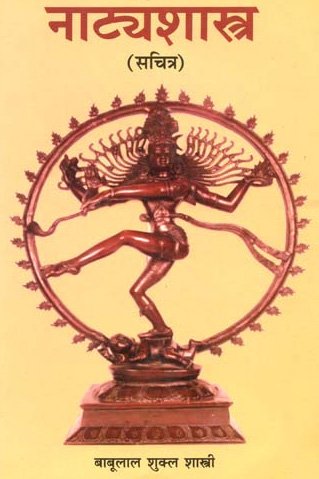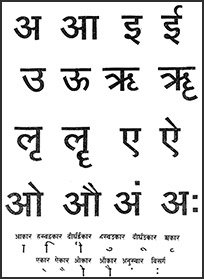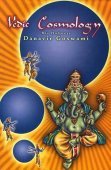Virodha: 28 definitions
Introduction:
Virodha means something in Buddhism, Pali, Hinduism, Sanskrit, Jainism, Prakrit, Marathi, Hindi. If you want to know the exact meaning, history, etymology or English translation of this term then check out the descriptions on this page. Add your comment or reference to a book if you want to contribute to this summary article.
Alternative spellings of this word include Virodh.
In Hinduism
Ayurveda (science of life)
Source: Wisdom Library: Āyurveda and botanyVirodha (विरोध) refers to “incompatibility”, and more specifically, it refers to foods that should not be taken together. It is used throughout Ayurvedic literature such as the Caraka-saṃhitā and the Suśruta-saṃhitā.
Source: gurumukhi.ru: Ayurveda glossary of termsVirodha (विरोध):—Suppression, Obstruction

Āyurveda (आयुर्वेद, ayurveda) is a branch of Indian science dealing with medicine, herbalism, taxology, anatomy, surgery, alchemy and related topics. Traditional practice of Āyurveda in ancient India dates back to at least the first millenium BC. Literature is commonly written in Sanskrit using various poetic metres.
Purana and Itihasa (epic history)
Source: archive.org: Shiva Purana - English TranslationVirodha (विरोध) refers to “enmity”, according to the Śivapurāṇa 2.3.14 (“The Birth of Tāraka and Vajrāṅga”).—Accordingly, as Vajrāṅga said to Varāṅgī: “My beloved wishes enmity [i.e.., virodha] with the gods. It does not appeal to me. What shall I do? Where shall I go? How can my vow be preserved from destruction? If my wife’s wishes are fulfilled, the three worlds will be much distressed, so too the gods and the sages. If my beloved’s desires are not fulfilled, I am sure to be cast into hell. In either case righteousness will be lost. This is what we have heard”.
Source: Cologne Digital Sanskrit Dictionaries: The Purana Index1a) Virodha (विरोध).—A son of Vāta, the Rākṣasa.*
- * Brahmāṇḍa-purāṇa III. 7. 96.
1b) A son of Bāṣkala.*
- * Vāyu-purāṇa 67. 79.

The Purana (पुराण, purāṇas) refers to Sanskrit literature preserving ancient India’s vast cultural history, including historical legends, religious ceremonies, various arts and sciences. The eighteen mahapuranas total over 400,000 shlokas (metrical couplets) and date to at least several centuries BCE.
Natyashastra (theatrics and dramaturgy)
Source: Wisdom Library: Nāṭya-śāstraVirodha (विरोध, “hindrance”) refers to ‘frustration’ or impediment to the successful progression of the plot. Virodha represents one of the thirteen pratimukhasandhi, according to the Nāṭyaśāstra chapter 21. This element is also known by the name Nirodha. Pratimukhasandhi refers to the “segments (sandhi) of the progressing part (pratimukha)” and represents one of the five segments of the plot (itivṛtta or vastu) of a dramatic composition (nāṭaka).

Natyashastra (नाट्यशास्त्र, nāṭyaśāstra) refers to both the ancient Indian tradition (shastra) of performing arts, (natya—theatrics, drama, dance, music), as well as the name of a Sanskrit work dealing with these subjects. It also teaches the rules for composing Dramatic plays (nataka), construction and performance of Theater, and Poetic works (kavya).
Vyakarana (Sanskrit grammar)
Source: Wikisource: A dictionary of Sanskrit grammarVirodha (विरोध).—Opposition or conflict between two rules where, the rule which is subsequently mentioned is regarded as stronger and given preference to, as far as its application is concerned; cf. तुल्यबलयोर्विरोधो विप्र-तिषेधः । विप्रतिषेधे परं कार्यम् (tulyabalayorvirodho vipra-tiṣedhaḥ | vipratiṣedhe paraṃ kāryam) P.I.4.2; (2) contradiction where one thing prevents another; cf. सर्वनामस्थाने इति अनुवर्तमानमपि विरोधादिह न संबध्यते (sarvanāmasthāne iti anuvartamānamapi virodhādiha na saṃbadhyate) Kāś.on P.VII.1.86.

Vyakarana (व्याकरण, vyākaraṇa) refers to Sanskrit grammar and represents one of the six additional sciences (vedanga) to be studied along with the Vedas. Vyakarana concerns itself with the rules of Sanskrit grammar and linguistic analysis in order to establish the correct context of words and sentences.
Kavyashastra (science of poetry)
Source: Shodhganga: The Kavyavilasa of Ciranjiva Bhattacarya (kavyashastra)Virodha (विरोध) refers to one of the 93 alaṃkāras (“figures of speech”) mentioned by Cirañjīva Bhaṭṭācārya (fl. 17th century) in his Kāvyavilāsa and is listed as one of the 89 arthālaṃkāras (figure of speech determined by the sense, as opposed to sound).—Ancient Ālaṃkārikas Bhāmaha (III/24) Udbhaṭa (V/9), Daṇḍin (II/333) have treated the figure named virodha. Vāmana (IV/3.12), Mammaṭa (X/166) Viśvanātha (X/89) and Jagannātha (II/P. 427) and some others have mentioned the word ābhāsa in the definition of virodha. Some Ālaṃkarikas like Appyyadīkṣita and kavikarṇapura have given the name virodhābhāsa.
Cirañjīva and Jayadeva (the author of Candrāloka) has treated the figures virodha and virodhābhāsa separately. When contradiction appears in mutual connection among genus, attribute, action and substance it is the figure virodha. Cirañjīva (K.V.II/P. 34) defines it as—“virodho’nupapattiśced guṇadravyakriyādiṣu”. This definition occurs verbatim in the Candrāloka of Jayadeva (C.L.V/74). Cirañjīva is silent about the varieties of this virodha. In the Sāhityadarpaṇa of Viśvanātha the varieties of virodha have been mentioned clearly.
Example of the virodha-alaṃkāra:—
sa kīdṛśaḥ śītakaro yo māṃ dahati santatam |
sa ca kālaḥ kathaṃ krūro yo me śaraṇatāṃ gataḥ ||“What type of pacifier is he who always torments me. How the god of death (Yama) under whom I have taken refuge be merciless”.
Notes: In this verse the pacifying nature of a person who is the tormentor is contradictory, similarly the cruelty of Yama under whom one has taken refuge is contradictory in nature. So this verse is an examples of virodha.
Source: Shodhganga: Bhismacaritam a critical studyVirodha (विरोध, “contradiction”) refers to one of the various Alaṅkāras (‘figures of speech’) classified as Artha (‘sense’), as employed in the Bhīṣmacarita (Bhishma Charitra) which is a mahākāvya (‘epic poem’) written by Hari Narayan Dikshit.—In the poem Bhīṣmacarita, the poet has deliberately used ‘virodha-alaṅkāra’. For instance, in VIII.4 the poet has aptly depicted the sorrow of king due to separation from Satyavatī, his beloved lady. During that time the king feels cool breeze of Monsoon even hot. The other example is I.9.

Kavyashastra (काव्यशास्त्र, kāvyaśāstra) refers to the ancient Indian tradition of poetry (kavya). Canonical literature (shastra) of the includes encyclopedic manuals dealing with prosody, rhetoric and various other guidelines serving to teach the poet how to compose literature.
Jyotisha (astronomy and astrology)
Source: Wisdom Library: Brihat Samhita by VarahamihiraVirodha (विरोध) refers to “war”, according to the Bṛhatsaṃhitā (chapter 3), an encyclopedic Sanskrit work written by Varāhamihira mainly focusing on the science of ancient Indian astronomy astronomy (Jyotiṣa).—Accordingly, “If the solar disc should be crossed by the rainbow the princes of the land will be at war with one another [i.e., nṛpati-virodha-prada]. If in winter the disc be clear there will be immediate rain. If in Varṣā the colour of the sun be that of the flower Śirīṣa there will be immediate rain; if the colour be that of the peacock’s plume there will be no rain for twelve years to come”.

Jyotisha (ज्योतिष, jyotiṣa or jyotish) refers to ‘astronomy’ or “Vedic astrology” and represents the fifth of the six Vedangas (additional sciences to be studied along with the Vedas). Jyotisha concerns itself with the study and prediction of the movements of celestial bodies, in order to calculate the auspicious time for rituals and ceremonies.
In Buddhism
Mahayana (major branch of Buddhism)
Source: academia.edu: A Study and Translation of the GaganagañjaparipṛcchāVirodha (विरोध) refers to “contradiction” (as opposed to Virodha—‘not being in contradiction with’, according to the Gaganagañjaparipṛcchā: the eighth chapter of the Mahāsaṃnipāta (a collection of Mahāyāna Buddhist Sūtras).—Accordingly, “How then, son of good family, does the Bodhisattva who has attained memory never forget? Son of good family, the Bodhisattva attains memory (dhāraṇī) by purifying his memory. What then is the purification of memory? Son of good family, there are thirty-two purifications of memory. What are the thirty-two? [...] (21) never rejecting even the six defilements; (22) not giving up the six ways of politeness; (23) practicing the dharma without thought which is hostile towards all living beings; (24) not being in contradiction with dependent origination (pratītyasamutpāda-avirodha); [...]”.
Source: De Gruyter: A Buddhist Ritual Manual on AgricultureVirodha (विरोध) refers to the “obstructed (of one’s life)”, according to the Vajratuṇḍasamayakalparāja, an ancient Buddhist ritual manual on agriculture from the 5th-century (or earlier), containing various instructions for the Sangha to provide agriculture-related services to laypeople including rain-making, weather control and crop protection.—Accordingly, [after the Bhagavān reached the vicinity of the residence of Vaiśravaṇa], “Then at the time of drought [at] the lotus lake, all forest flowers, fruits, leaves and foliage were dry, the flowers withered. The fish, Makaras, Timiṅgilas, alligators, bees and various other water-born beings were deprived of water, and when only little water remained they fled in the ten directions, dashed, ran with pained hearts because their lives were obstructed (jīvita-virodha) and ruined”.

Mahayana (महायान, mahāyāna) is a major branch of Buddhism focusing on the path of a Bodhisattva (spiritual aspirants/ enlightened beings). Extant literature is vast and primarely composed in the Sanskrit language. There are many sūtras of which some of the earliest are the various Prajñāpāramitā sūtras.
In Jainism
Jain philosophy
Source: archive.org: Anekanta Jaya Pataka of Haribhadra SuriVirodha (विरोध) refers to “contradiction”, as used in the Anekāntajayapatākā-prakaraṇa, a Śvetāmbara Jain philosophical work written by Haribhadra Sūri.—[Cf. Vol. I, P. 10, l. 17]—Virodha, is of three kinds: (1) parasparaparihārasthiti, (2) vadhyaghātaka and (3) sahānavasthāna. Suppose there is a mango-fruit which is green in colour and sour in taste. When it is so, it is not yellow in colour and sweet m taste. This is possible only when the first state gets removed. Thus both of these states are mutually exclusive of one another and not co-existent. Amongst the available works of the Śvetāmbaras, it seems Gandhahastin Siddhasena Gaṇī’s commentary (pp 394-398) on Tattvārthasūtra (V, 31) is the first work to deal with the subject of virodha in details Dharmakirti has treated this subject m Pramāṇaviniścaya.
Virodha refers to one of the “faults” (doṣa) mentioned in the Syādvādaratnākara and Vidyānanda’s Aṣṭaśatī as well as the Tarkarahasyadīpikā (p 93b).
-
Languages of India and abroad
Pali-English dictionary
Source: BuddhaSasana: Concise Pali-English Dictionaryvirodha : (m.) opposition; contradiction; obstruction.
Source: Sutta: The Pali Text Society's Pali-English DictionaryVirodha, (vi+rodha1) obstruction, hindrance, opposition, enmity S. I, 111; IV, 71, 210; Sn. 362; Pug. 18, 22; Kvu 485; Miln. 394; DhsA. 39.—avirodha absence of obstruction, gentleness M. II, 105=Th. 1, 875; Pv III, 73. (Page 635)

Pali is the language of the Tipiṭaka, which is the sacred canon of Theravāda Buddhism and contains much of the Buddha’s speech. Closeley related to Sanskrit, both languages are used interchangeably between religions.
Marathi-English dictionary
Source: DDSA: The Molesworth Marathi and English Dictionaryvirōdha (विरोध).—m (S) Opposition; action or influence against; antagonism, contrariety, hostility. For ex. of comp. see under viruddha. 2 Inconsistency (in argument). 3 Antithesis or contrast.
Source: DDSA: The Aryabhusan school dictionary, Marathi-Englishvirōdha (विरोध).—m Opposition. Inconsistency. Contrast.
Marathi is an Indo-European language having over 70 million native speakers people in (predominantly) Maharashtra India. Marathi, like many other Indo-Aryan languages, evolved from early forms of Prakrit, which itself is a subset of Sanskrit, one of the most ancient languages of the world.
Sanskrit dictionary
Source: DDSA: The practical Sanskrit-English dictionaryVirodha (विरोध).—
1) Opposition, obstruction, impediment.
2) Blockade, siege, investment.
3) Restraint, check.
4) Inconsistency, incongruity, contradiction; विरोधो न विद्यते ब्रह्माद्वितीयमेव सत्यम् (virodho na vidyate brahmādvitīyameva satyam) | (-tripādvibhūtimahānārāyaṇopaniṣat 4.2.)
5) Antithesis, contrast.
6) Enmity, hostility; विरोधो विश्रान्तः (virodho viśrāntaḥ) Uttararāmacarita 6.11; Pañcatantra (Bombay) 1.332; R.1.13.
7) A quarrel, disagreement.
8) A calamity, misfortune.
9) (In Rhet.) An apparent incongruity which is merely verbal and is explained away by properly construing the passage; it consists in representing objects as antithetical to one another though in the nature of things they are not so; representing things as being together though really they cannot be together; (this figure is largely used by Bāṇa and Subandhu; puṣpavatyapi pavitrā, kṛṣṇo'pyasudarśanaḥ, bharato'pi śatrughnaḥ being familiar instances;) it is thus defined by Mammaṭa :-विरोधः सोऽविरोधे- ऽपि विरुद्धत्वेन यद्वचः (virodhaḥ so'virodhe- 'pi viruddhatvena yadvacaḥ) K. P.1; this figure is also called विरोधाभास (virodhābhāsa)).
Derivable forms: virodhaḥ (विरोधः).
Source: Cologne Digital Sanskrit Dictionaries: Shabda-Sagara Sanskrit-English DictionaryVirodha (विरोध).—m.
(-dhaḥ) 1. Enmity, animosity. 2. Restraint, check, control, confinement. 3. Opposition, contradiction. 4. Preventing, hindrance. 5. War. 6. Calamity, misfortune. 7. Surrounding, investing, siege, blockade. 8. Impediment to a successful progress of the story, (in a play.) 9. Antithesis, contrast. 10. Opposition of qualities, (in articles of food or medicine, &c.) 11. Inconsistency, (in argument.) f. (-dhī) Fixed rule, ordinance, institute. E. vi before rudh to stop, aff. ghañ .
Source: Cologne Digital Sanskrit Dictionaries: Benfey Sanskrit-English DictionaryVirodha (विरोध).—i. e. vi-rudh + a, I. m. 1. Hindrance, impediment. 2. Restraint, check. 3. Opposition, [Pañcatantra] 162, 14;
Virodha (विरोध).—[masculine] obstruction, hindrance, disturbance; opposition, contradiction; adversity, injury, detriment, calamity; hostility, contest between ([instrumental] ±saha or —°).
Source: Cologne Digital Sanskrit Dictionaries: Aufrecht Catalogus Catalogorum1) Virodha (विरोध) as mentioned in Aufrecht’s Catalogus Catalogorum:—[nyāya] Oppert. Ii, 887. 1164.
—by Gadādhara. Oppert. Ii, 3802.
2) Virodha (विरोध):—[nyāya] by Gadādhara. Gov. Or. Libr. Madras 85.
3) Virodha (विरोध):—[nyāya] by Gadādhara. Hz. 1248.
Source: Cologne Digital Sanskrit Dictionaries: Monier-Williams Sanskrit-English Dictionary1) Virodha (विरोध):—[=vi-rodha] [from vi-rudh] m. opposition, hostility, quarrel, strife between ([genitive case], rarely [instrumental case], or [compound]) or with ([instrumental case] with or without saha, or [compound]), [Mahābhārata; Kāvya literature] etc.
2) [v.s. ...] hostile contact of inanimate objects (as of planets etc.), [Varāha-mihira’s Bṛhat-saṃhitā]
3) [v.s. ...] (logical) contradiction, contrariety, antithesis, inconsistency, incompatibility, [Kātyāyana-śrauta-sūtra; Kaṇāda’s Vaiśeṣika-sūtra] [Kapila] etc.
4) [v.s. ...] (ifc.) conflict with, injury of ([instrumental case] = at the cost or to the detriment of), [Yājñavalkya; Mahābhārata]
5) [v.s. ...] hindrance, prevention, [Gautama-dharma-śāstra]
6) [v.s. ...] blockade, siege, [Horace H. Wilson]
7) [v.s. ...] adversity, calamity, misfortune, [Sāhitya-darpaṇa]
8) [v.s. ...] perversity, [Kathāsaritsāgara]
9) [v.s. ...] (in [rhetoric]) an apparent contradiction or incongruity (e.g. bharato pi śatru-ghnaḥ), [Kāvyaprakāśa]
10) [v.s. ...] (in [dramatic language]) impediment to the successful progress of a plot, [Horace H. Wilson]
Source: Cologne Digital Sanskrit Dictionaries: Yates Sanskrit-English DictionaryVirodha (विरोध):—[vi-rodha] (dhaḥ) 1. m. Enmity; barrier; restraint; opposition; obstacle; contrast; incompatibility; inconclusiveness; siege. f. Fixed rule, institute.
Source: DDSA: Paia-sadda-mahannavo; a comprehensive Prakrit Hindi dictionary (S)Virodha (विरोध) in the Sanskrit language is related to the Prakrit word: Viroha.
[Sanskrit to German]
Sanskrit, also spelled संस्कृतम् (saṃskṛtam), is an ancient language of India commonly seen as the grandmother of the Indo-European language family (even English!). Closely allied with Prakrit and Pali, Sanskrit is more exhaustive in both grammar and terms and has the most extensive collection of literature in the world, greatly surpassing its sister-languages Greek and Latin.
Hindi dictionary
Source: DDSA: A practical Hindi-English dictionaryVirodha (विरोध) [Also spelled virodh]:—(nm) opposition, antagonism; hostility; resistance, objection; antimony, contrariety; protest; contradiction; —[karanā] to oppose; to resist; to object; to protest; to contradict; to contest; to strike a blow against; to set one’s face against.
...
Kannada-English dictionary
Source: Alar: Kannada-English corpusVirōdha (ವಿರೋಧ):—
1) [noun] the act of opposing; opposition.
2) [noun] an opposed condition; resistance; opposition.
3) [noun] an unpleasant, unfavouable, non-conducive condition.
4) [noun] a feeling of enmity, ill-will, unfriendliness.
5) [noun] a quarrel; dispute.
6) [noun] the condition of being destroyed; destruction.
7) [noun] (rhet.) a figure of speech implying incongruity.
Kannada is a Dravidian language (as opposed to the Indo-European language family) mainly spoken in the southwestern region of India.
See also (Relevant definitions)
Partial matches: Rodha, Vi, Rota.
Starts with (+20): Virodhabhaj, Virodhabhakti, Virodhabhanjani, Virodhabhanjini, Virodhabhas, Virodhabhasa, Virodhabhasa-alankara, Virodhacarana, Virodhaka, Virodhakaraka, Virodhakarin, Virodhakarta, Virodhakrit, Virodhakriya, Virodhalamkara, Virodhana, Virodhapaksha, Virodhaparihara, Virodhapatra, Virodhaphala.
Ends with (+19): Abhyupagamavirodha, Agamavirodha, Amshuvirodha, Amtarvirodha, Amttarvirodha, Antarahitavirodha, Antaravirodha, Anurodhavirodha, Arthadravyavirodha, Avirodha, Baddhavirodha, Dharmavirodha, Dvicaravirodha, Dvidhavirodha, Ekamishavirodha, Gotravirodha, Hridayavirodha, Jivitavirodha, Kalavirodha, Kshatravirodha.
Full-text (+79): Vacanavirodha, Virodhabhasa, Avirodha, Pratijnavirodha, Shastravirodha, Viroha, Smritivirodha, Virodhokti, Virodhopama, Virodhakrit, Virodhacarana, Virodhaparihara, Shashvatika, Hridayavirodha, Sarvarodhavirodhasamprashamana, Virodhavada, Virodhavaruthininirodha, Virodhakriya, Virodhavaruthini, Virodhashamana.
Relevant text
Search found 46 books and stories containing Virodha, Vi-rodha, Virōdha; (plurals include: Virodhas, rodhas, Virōdhas). You can also click to the full overview containing English textual excerpts. Below are direct links for the most relevant articles:
Sahitya-kaumudi by Baladeva Vidyabhushana (by Gaurapada Dāsa)
Text 10.132 < [Chapter 10 - Ornaments of Meaning]
Text 10.127 [Virodha] < [Chapter 10 - Ornaments of Meaning]
Text 10.133 < [Chapter 10 - Ornaments of Meaning]
Alamkaras mentioned by Vamana (by Pratim Bhattacharya)
12: Definition of Virodha Alaṃkāra < [Chapter 4 - Arthālaṃkāras mentioned by Vāmana]
1-2: The number of Alaṃkāras (poetic figures) mentioned < [Chapter 5 - A Comparative study of the different alaṃkāras mentioned by Vāmana]
13: Definition of Vibhāvanā Alaṃkāra < [Chapter 4 - Arthālaṃkāras mentioned by Vāmana]
Brihad Bhagavatamrita (commentary) (by Śrī Śrīmad Bhaktivedānta Nārāyana Gosvāmī Mahārāja)
Verse 2.4.44 < [Chapter 4 - Vaikuṇṭha (the spiritual world)]
A History of Indian Philosophy Volume 3 (by Surendranath Dasgupta)
Part 21 - Śaila Śrīnivāsa < [Chapter XX - Philosophy of the Rāmānuja School of Thought]
Part 22 - Raṅgācārya < [Chapter XX - Philosophy of the Rāmānuja School of Thought]
Part 4 - Rāmānuja Literature < [Chapter XVIII - An Historical and Literary Survey of the Viśiṣṭādvaita School of Thought]
Manusmriti with the Commentary of Medhatithi (by Ganganatha Jha)
Verse 4.64 < [Section IX - Personal Cleanliness]
Verse 1.84 < [Section LII - The span of Human Life in each Cycle]
Mudrarakshasa (literary study) (by Antara Chakravarty)
3.16. Use of Virodhābhāsa-alaṃkāra < [Chapter 3 - Use of Alaṃkāras in Mudrārākṣasa]
3.18. Use of Viśeṣokti-alaṃkāra < [Chapter 3 - Use of Alaṃkāras in Mudrārākṣasa]
3.20. Use of Asaṅgati-alaṃkāra < [Chapter 3 - Use of Alaṃkāras in Mudrārākṣasa]
Related products
